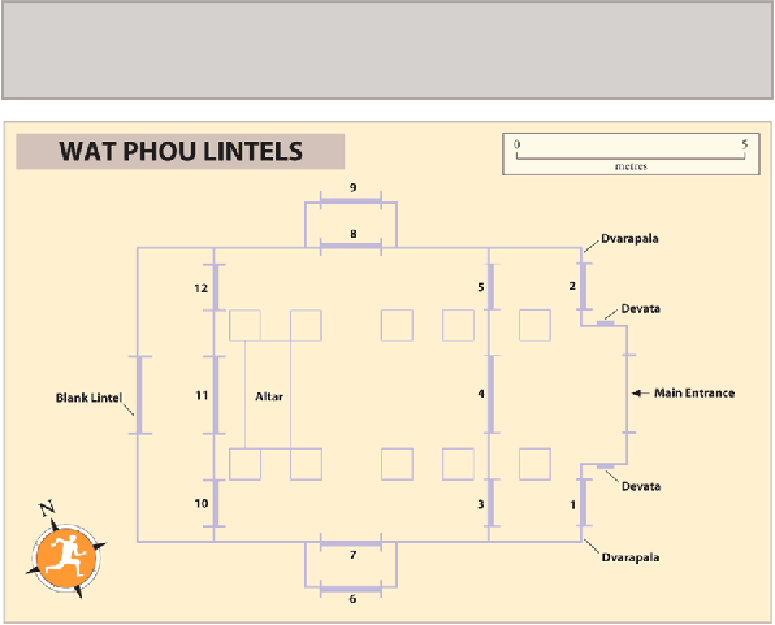Travel Reference
In-Depth Information
11DeityatopKala(see#5)
This lintel has been badly damaged, possibly by looters trying
to remove part of the sculpture for the thriving stolen-antiquities trade in Thailand.
12 Deity atop Kala (see #5)
The cave
Continuing up the hill behind the temple, you'll come to a
shallow cave
, the floor of which
is muddy from the constant drip of water that collects on its ceiling. This water is considered
highly sacred, as it has trickled down from the peak of Lingaparvata. In former times, a sys-
tem of stone pipes directed the run-off to the temple, where it bathed the enshrined Shiv-
alinga. By tradition, this water was utilized in ceremonies for the coronation of Khmer kings
and later the kings of Siam. Even today, Lao pilgrims will dip their fingers into a cistern loc-
ated in the cave and ritually anoint themselves, although this is something foreign visitors
should respectfully avoid.
The crocodile and elephant stones
If you follow the base of the cliff in a northerly direction, a bit of sleuthing will lead you to
the enigmatic
crocodile stone
, which may have been used as an altar for pre-Angkor-period
human sacrifices, though there is no hard evidence that ritual sacrifice was a part of the cere-
monies that took place here. Nearby is a pile of sandstone rubble that once formed a pavilion
and is thought by archeologists to be one of the oldest structures on the site. A few metres
away to the north is the
elephant stone
, a huge, moss-covered boulder carved with the face
of an elephant. This carving is relatively recent, probably dating from the nineteenth century.
Lingaparvata
If you were to hike straight up the mountain to the
summit of Lingaparvata
, it would take
two days of rigorous climbing over vertical cliff faces and dense forest. In 1997, an Italian
team of archeologists did just that. On the very tip of the natural phallic outcropping that

